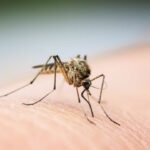SpaceX’s Falcon Heavy rocket, launched Thursday by billionaire Elon Musk’s company, sent a US military plane, the X-37B, into space for the first time without a crew and to conduct advanced research, CNN reported. It’s unclear where the spaceplane will go, but the secretive aircraft has been in orbit for 3,774 days on six previous missions, with the most recent one lasting 908 days.
Here’s what we know so far:
The X-37b has always been kept under wraps. With Thursday’s launch, the plane has now been launched seven times in space.
It looks a lot like a small NASA space shuttle, with windows covered.
It’s been used for research on concepts like transferring solar energy from outer space to Earth and studying radiation damage to seeds used for growing food, CNN reported.
The launch came just two weeks after China’s Shenlong, or “Divine Dragon,” a robot space plane, blasted off on its third space mission since 2020, Reuters reported.
At the end of the mission, the aircraft descends through the atmosphere and lands on a runway, similar to an aircraft.
The X37B is a commercial aircraft built by the aerospace giant Boeing. It is approximately the same size as a bus.
The use of the Falcon Heavy rocket could mean that the spaceplane will be able to carry payloads further out into space, according to Paul Graziani of COMSPOC. COMSPOC is a company that specialises in tracking objects in space. Graziani said that using one of the world’s most powerful rockets could mean that the vehicle will be able to take payloads farther out into space.
Graziani said that if the military does not want their X-37B to be tracked, they can hide it in the sun’s glare or use other methods, such as changing its position frequently.
“This could be one of the most exciting things to happen in space for a long time, no matter what it does,” Graziani said.
It has been widely speculated that the spaceplane could be headed toward geosynchronous orbit.
What’s in the box?
According to CNN, NASA, the US space agency, has launched research that seeks to find solutions to sustain astronauts during future deep space missions. Seeds-2 will “expose plant seed to the intense radiation of long-term spaceflight” and is based on research conducted on earlier X-37Bs.
Check out the latest songs only on jio.com
Can we grow crops in space?
The answer to this question has huge implications for future deep space missions to moon and Mars.
While an exact timeline has not been disclosed, it is likely to last until at least June 2026, given the typical sequence of longer flights for the newest X-37Bs.











